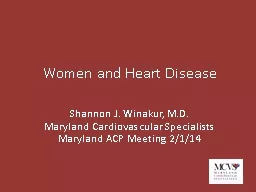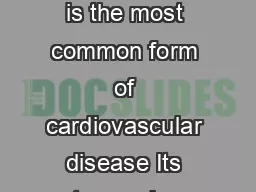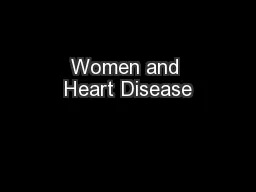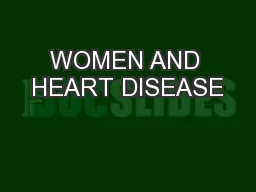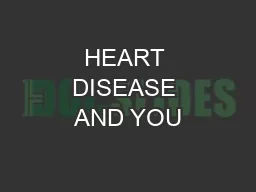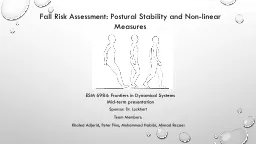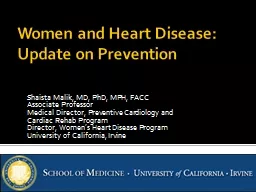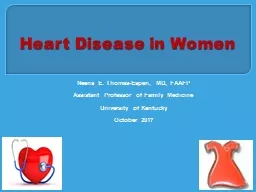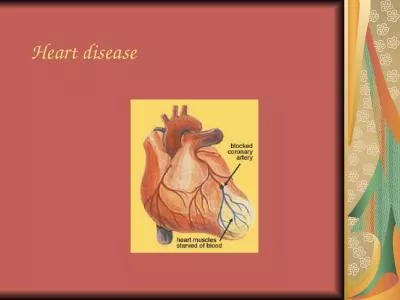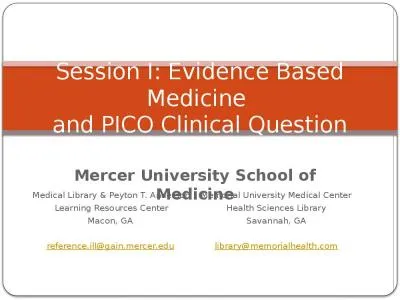PPT-Women and Heart Disease Shannon J.
Author : pasty-toler | Published Date : 2018-09-18
Winakur MD Maryland Cardiovascular Specialists Maryland ACP Meeting 2114 Overview The scope of the problem Symptoms Risk factors Prevention diagnosis and treatment
Presentation Embed Code
Download Presentation
Download Presentation The PPT/PDF document "Women and Heart Disease Shannon J." is the property of its rightful owner. Permission is granted to download and print the materials on this website for personal, non-commercial use only, and to display it on your personal computer provided you do not modify the materials and that you retain all copyright notices contained in the materials. By downloading content from our website, you accept the terms of this agreement.
Women and Heart Disease Shannon J.: Transcript
Download Rules Of Document
"Women and Heart Disease Shannon J."The content belongs to its owner. You may download and print it for personal use, without modification, and keep all copyright notices. By downloading, you agree to these terms.
Related Documents

